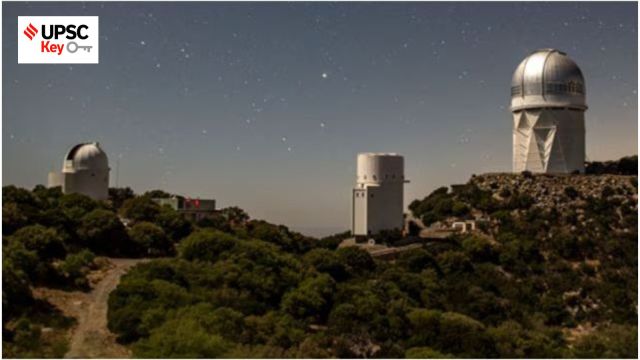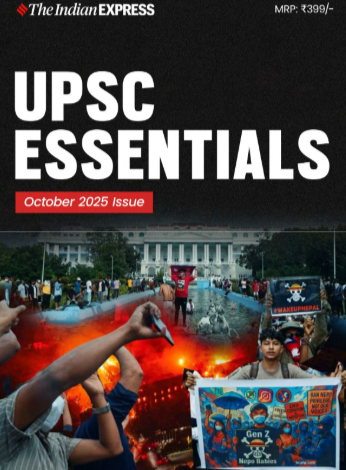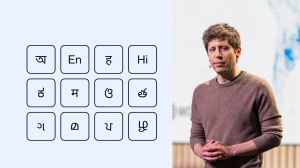Manas Srivastava leads the UPSC Essentials section of The Indian Express (digital). He majorly writes on UPSC, other competitive exams and education-related projects. In the past, Manas has represented India at the G-20 Youth Summit in Mexico. He is a former member of the Youth Council, GOI. A two-time topper/gold medallist in History (both in graduation and post-graduation) from Delhi University, he has mentored and taught UPSC aspirants for more than five years. His diverse role in The Indian Express consists of writing, editing, anchoring/ hosting, interviewing experts, and curating and simplifying news for the benefit of students. He hosts the YouTube talk show called ‘Art and Culture with Devdutt Pattanaik’ and a LIVE series on Instagram and YouTube called ‘LIVE with Manas’.His talks on ‘How to read a newspaper’ focus on newspaper reading as an essential habit for students. His articles and videos aim at finding solutions to the general queries of students and hence he believes in being students' editor, preparing them not just for any exam but helping them to become informed citizens. This is where he makes his teaching profession meet journalism. He is also the editor of UPSC Essentials' monthly magazine for the aspirants. He is a recipient of the Dip Chand Memorial Award, the Lala Ram Mohan Prize and Prof. Papiya Ghosh Memorial Prize for academic excellence. He was also awarded the University’s Post-Graduate Scholarship for pursuing M.A. in History where he chose to specialise in Ancient India due to his keen interest in Archaeology. He has also successfully completed a Certificate course on Women’s Studies by the Women’s Studies Development Centre, DU. As a part of N.S.S in the past, Manas has worked with national and international organisations and has shown keen interest and active participation in Social Service. He has led and been a part of projects involving areas such as gender sensitisation, persons with disability, helping slum dwellers, environment, adopting our heritage programme. He has also presented a case study on ‘Psychological stress among students’ at ICSQCC- Sri Lanka. As a compere for seminars and other events he likes to keep his orating hobby alive. His interests also lie in International Relations, Governance, Social issues, Essays and poetry. ... Read More
UPSC Key— 5th April, 2024: Dark energy, Prostate cancer, E-vehicles and more
Exclusive for Subscribers from Monday to Friday: How are Dark Energy Spectroscopic Instrument and Exchange traded currency derivatives relevant to the UPSC Exam? What significance do topics like entry of global EV manufacturers in the country and AB-PMJAY have for both the preliminary and main exams? You can learn more by reading the Indian Express UPSC Key for April 5, 2024.
 The hypothesis of dark energy comes mainly from the observed phenomenon of the universe expanding at a rapid rate. Find more in our UPSC Key today. (DESI)
The hypothesis of dark energy comes mainly from the observed phenomenon of the universe expanding at a rapid rate. Find more in our UPSC Key today. (DESI)Important topics and their relevance in UPSC CSE exam for April 5, 2024. If you missed the April 4, 2024 UPSC CSE exam key from the Indian Express, read it here.
EXPRESS NETWORK
3D Map of universe may open a window to dark energy
UPSC Syllabus:
Preliminary Examination: Science and Technology (Current issues of international importance)
Mains Examination: GS 3: Science and Technology (Space)
• What’s the ongoing story- An international team of researchers has just released the most comprehensive “three-dimensional” map of the universe, which, scientists hope, could reveal some clues about dark energy, the mysterious force that is believed to be causing the universe to expand uncontrollably. The researchers, including an Indian team led by Shadab Alam at the Tata Institute of Fundamental Research in Mumbai, has published its findings from the first year of observations by the Dark Energy Spectroscopic Instrument, or DESI, a unique piece of equipment that, once fitted over a telescope, can capture light from 5,000 galaxies at the same time.
• Prerequisites:
What should you know?
Dark Energy Vs Dark Matter
Black holes
XENON1T
• Key Takeaways:
— Using DESI, which is mounted over the Mayall 4-Meter Telescope in Arizona, United States, researchers have been able to measure light from six million galaxies — some of which existed as far back as 11 billion years ago — to prepare the most detailed map of the universe as yet with very precise information about the distances between these galaxies.
— The hypothesis of dark energy comes mainly from the observed phenomenon of the universe expanding at a rapid rate. The vast empty spaces between stars and galaxies have been measured to be expanding at an accelerating pace, despite the countervailing force of gravitation that has the effect of pulling things together. Scientists have been unable to find any explanation for this rapid expansion, and have been forced to hypothesise that there must be some “dark” energy causing this expansion.
 The hypothesis of dark energy comes mainly from the observed phenomenon of the universe expanding at a rapid rate. (DESI)
The hypothesis of dark energy comes mainly from the observed phenomenon of the universe expanding at a rapid rate. (DESI)
— Understanding the nature of dark energy is one of the fundamental problems in science right now, because it can offer key insights into the origin and evolution of the universe, as well as its eventual fate. It can reveal new fundamental forces at work, and could unravel our entire knowledge of the physical world. The problem is that, so far, scientists have not been able to figure out even the first piece of the puzzle.
— The DESI collaboration has measured that the expansion rate of the universe was increasing by 68.5 km per second after every 3.26 million light years of distance, a unit astronomers define as megaparsec.
• Do you know?
— The European Space Agency’s (ESA) Euclid mission, which was launched last year to investigate the mystery of dark matter and dark energy, released its science images. They include views of large clusters with thousands of distant galaxies, close-ups of two nearby galaxies, a nebula, and a gravitationally bound group of stars called a globular cluster.
• Point to ponder:
— What is the explanation behind dark energy?
• Post Read Question:
1. DESI is a collaboration of more than 900 researchers in institutions across the world. From India, __________ is the only participating institution.
2. Which of the following is/are cited by the scientists as evidence/evidence for the continued expansion of the universe? (2012)
- Detection of microwaves in space
- Observation of redshift phenomenon in space
- Movement of asteroids in space
- Occurrence of supernova explosions in space
Select the correct answer using the codes given below:
(a) 1 and 2
(b) 2 only
(c) 1, 3 and 4
(d) None of the above can be cited as evidence
Explained: What is dark energy, and have scientists finally detected it?
Black holes existed at the dawn of time, birthing new stars, finds study
Dark matter: An invisible glue that may not even exist
Prostate cancer cases in India set to double by 2040: Lancet
UPSC Syllabus:
Preliminary Examination: Current events of national importance. (Health)
Mains Examination: GS II: Issues relating to development and management of Social Sector/Services relating to Health, Education, Human Resources
• What’s the ongoing story- Two years ago, a 64-year-old general surgeon in Pune complained of backache and was diagnosed with an advanced stage of prostate cancer that had already spread to his spine. Yet he had no early symptoms like difficulty in passing urine. Many Indian men, like him, are being diagnosed in late stages and succumbing to the disease, says a latest Lancet Commission paper, which has projected prostate cancer incidence in India to surge sharply by 2040.
• Prerequisites:
— What is Prostate cancer?
— Important Lancet reports in news
• Key Takeaways:
— According to the International Agency for Research on Cancer projections, which Lancet has factored in its analysis, prostate cancer incidence in India will double to about 71,000 new cases per year by 2040. Prostate cancer accounts for three per cent of all cancers in India, with an estimated 33,000-42,000 new cases diagnosed annually.
— The cases of prostate cancer are projected to double from 1.4 million per year in 2020 to 2.9 million per year by 2040 worldwide, with low and middle-income countries predicted to see the highest increase.
— The Lancet authors have recommended use of MRI scans and PSA tests to screen men at high risk of prostate cancer in high-income countries.
• Point to ponder:
Why are cancer cases rising in India? Why is early awareness and detection important?
(Thought Process: Ageing populations and increasing life expectancy mean there will be higher numbers of older men in the coming years. “Also rampant corporate health checkups that include a Prostate-Specific Antigen (PSA) test, which measures protein produced by both cancerous and benign tissue in the prostate glands, is pushing up numbers,” says Dr Vedang Murthy, Professor, who is among the authors of the Lancet Commission on Prostate Cancer. The main risk factors are age and genetics, which, according to him, are aggravated by additional factors like smoking, obesity, a poor diet and lifestyle. Prostate cancer may cause no signs or symptoms in the early stages and it is only in the advanced stages that patients report symptoms like trouble urinating, bone pain, blood in the semen or urine and others.)
• Other Important Article Covering the same topic:
Govt push puts spotlight on cervical cancer, experts hope it is possible turning point
Explained Page
Syllabus:
Preliminary Examination: Current events of national and international importance, Indian Geography.
Mains Examination: GS-II: Bilateral, regional and global groupings and agreements involving India and/or affecting India’s interests.
• What’s the ongoing story- After Prime Minister Narendra Modi amplified an RTI reply on Katchatheevu obtained by Tamil Nadu BJP leader K Annamalai by accusing Indira Gandhi’s government of “callously giving away” the island to Sri Lanka.
• Key Takeaways:
What should be the basis of international pacts and what makes a deal a good deal?
— When two governments negotiate an agreement, they work with information and understanding of the issue available at the time. The governments also take into account possible future scenarios and projections.
— An agreement on what and what not to concede is critical — current negotiations on the India-UK Free Trade Agreement are moving slowly because the two sides have not been able to agree yet on the specific give-and-take that will make the deal worth doing for both.
— The fundamental principle of any good deal is that it stands the test of time. Many of the international agreements that India has signed with its neighbours have helped to maintain peace and mutual cooperation in the region, irrespective of the government or party in power. For instance, land boundary agreements between India and Bangladesh. India also settled its maritime boundary with Bangladesh in July 2014.
• Map Work:

1. Mark the important islands between India and Sri Lanka.
2. Palk Strait
• Points to ponder:
What is land boundary agreement between India and Bangladesh?
India-Sri Lanka relations and recent developments
• Other Important Article Covering the same topic:
Katchatheevu island issue: India got Wadge Bank… agreement in good faith, say former diplomats
Economy Page
RBI defers exchange traded currency derivatives norms
Syllabus:
Preliminary Examination: Economic and Social Development
Mains Examination: GS-III: Indian Economy and issues relating to planning, mobilisation, of resources, growth, development and employment.
• What’s the ongoing story- The Reserve Bank of India (RBI) deferred the implementation of its new norms for exchange traded currency derivatives (ETCD) market to May 3 from April 5.
This comes after market participants expressed worries about ETCD market participation, and the currency market experienced a substantial increase in volatility leading up to the April 5 deadline.
• Key Takeaways:
— The new norm allowed users to take positions (long or short) in foreign exchange derivatives market, without having to establish existence of underlying exposure, up to a single limit of $100 million equivalent across all currency pairs involving the rupee, put together, and combined across all recognised stock exchanges.
— However, the regulator asked stock exchanges to inform users that while they are not required to establish the existence of underlying exposure, they must ensure the existence of a valid underlying contracted exposure which has not been hedged using any other derivative contract and should be in a position to establish the same when required.
• For Your Information:
— The RBI said the regulatory framework for participation in ETCDs involving the rupee (INR) is guided by the provisions of the Foreign Exchange Management Act (FEMA), 1999 and regulations framed thereunder which mandate that currency derivative contracts involving the rupee — both over-the-counter (OTC) and exchange traded — are permitted only for the purpose of hedging of exposure to foreign exchange rate risks.
— The regulatory framework has been reiterated in the Foreign Exchange Management (Foreign Exchange Derivative Contracts) Regulations, which states that a person may enter into an ETCD contract involving the rupee only for the purpose of hedging a contracted exposure.
— For the purpose of ease of doing business, the RBI permitted users of ETCDs to take positions up to $10 million per exchange without having to provide documentary evidence to establish the underlying exposure but did not provide any exemption from the requirement of having the exposure.
• Do you know:
What is exchange traded currency derivatives?
— A standardised financial contract that is traded on stock exchanges under strict regulations is known as an exchange-traded derivative.
(Source: http://www.sebi.gov.in)
• Point to ponder:
What is ease of doing business and what is the India’s ranking in latest ease of doing business index?
What is Foreign Exchange Management Act (FEMA), 1999?
What are Foreign Exchange Derivative Contracts?
• Other Important Article Covering the same topic:
90 years of the Reserve Bank of India (RBI): Its history, how it navigated times of crisis
Why RBI has kept policy rates unchanged
THE IDEAS PAGE
UPSC Syllabus:
Preliminary Examination: Current events of national importance. (Health)
Mains Examination: GS II: Issues relating to development and management of Social Sector/Services relating to Health, Education, Human Resources
Mains Examination:
• What’s the ongoing story- Arvind Lal writes: As India prepares for the general elections, it’s imperative to acknowledge healthcare as a vital investment for the nation’s well-being and prosperity. Despite its significance, healthcare often takes a back seat in political discourse. Instead of viewing it as a burden on the exchequer, we must recognise healthcare as a strategic investment that yields invaluable returns in terms of human capital development, economic growth and sustainable development.
• The Central Question: What does the government need to do to support the healthcare ecosystem in India?
• Prerequisites:
— What is the Health Care structure in India?
— What are the Initiatives for the Health Care Sector?
(National Health Mission, Ayushman Bharat, Pradhan Mantri Jan Arogya Yojana (AB-PMJAY), National Medical Commission, Janani Shishu Suraksha Karyakram (JSSK) etc.)
— Non-communicable diseases
— Public Vs Private Healthcare system debate in Indian
• For Your Information:
— The first step towards prioritising health is to acknowledge its importance in the national budget. The government is committed to spending 2.5 per cent of the GDP on health by 2025. Given that India’s GDP will grow to nearly Rs 323 lakh crore (US $3.8 trillion) by 2025, public health expenditure should rise to Rs 8 lakh crore, with the Centre contributing 40 per cent or Rs 3.23 lakh crore. But, the central budget allocation for 2024-25 is Rs 90,000 crore — only 28 per cent.
— Addressing healthcare requires a fundamental change in mindset, with the government playing a catalytic role in transforming the landscape, leveraging the strengths of both public and private sectors, leaving behind the trust deficit between the two. By forging strategic partnerships and incentivising the private sector, which caters to nearly 70 per cent of healthcare needs, the government can ensure quality health services and bridge the existing gaps in the health system.
— On primary healthcare: Strengthening primary healthcare through the 1.7 lakh Health and Wellness Centres (now renamed as Ayushman Arogya Mandirs) and creating a mechanism to cover OPD care under health insurance, will ensure better health outcomes, lower out-of-pocket expenditure and reduce the burden on secondary and tertiary hospitalisation.
— Non-Communicable Diseases (NCDs) have risen to account for about 65 per cent of all mortalities in the country. NCDs can be largely prevented and controlled by interventions at the primary healthcare level, thus preventing a significant number of complications, morbidity, mortality and instances of hospitalisation.
— On healthcare workforce: We need a huge healthcare workforce. It is no surprise that healthcare is the fourth largest employer in the country. Given the astounding number of vacancies against sanctioned posts at various levels of the public health system and the expansion of healthcare infrastructure, the health sector has the potential to add 4 crore jobs. This can be a significant contributor to addressing the unemployment challenge and act as a GDP driver.
• What is Ayushman Bharat Pradhan Mantri Jan Arogya Yojana (AB-PMJAY)? What are its challenges?
• What is the ‘trust deficit’ with the public healthcare system? How to fill the gap between public and private health systems?
(Quotable: To draw more participation from the private sector, reimbursement rates must be corrected and a differential pricing model should be implemented to differentiate hospitals based on their clinical excellence, accreditations, scale and investment in technology.)
• Points to ponder:
1. Suggest ways to improve the health sector in the country.
(Thought Process: Prioritizing health in national budget, increasing healthcare workforce, addressing the infrastructure gap (2 tier and 3 tier cities and beyond), bridging the gap between public and private etc.)
2. “Besides being a moral imperative of a Welfare State, primary health structure is a necessary precondition for sustainable development.” Analyse. (2021)
THE EDITORIAL PAGE
UPSC Syllabus:
Preliminary Examination: Science and Technology (Current issues of national importance)
Mains Examination: GS 3: Science and Technology
Mains Examination:
• What’s the ongoing story- In March, the Union government had approved a new e-vehicle policy with the aim to facilitate the entry of global EV manufacturers in the country. The policy involves lowering the duty for EV imports — this has been a long-standing demand for EV majors like Tesla — for companies setting up a manufacturing plant with a minimum investment of Rs 4,150 crore. Alongside, the policy also lays out clear localisation targets that companies have to achieve — 25 per cent by the third year and 50 per cent by the fifth — in order to boost domestic value addition. It would appear that this new policy is evincing serious interest. According to reports, US electric car maker Tesla Motors will be sending a team to India to scout for locations for a $2-3 billion electric car plant. This is welcome news.
• Key Takeaways:
— Access to one of the largest and fastest growing markets in the world — India is the third largest auto market behind China and the US — at a time when others are slowing down, will be a big draw for electric vehicle manufacturers like Tesla. While the EV market is currently small in the country, it is gaining traction — in 2023, sales of electric vehicles surpassed 1.5 million, dominated by two-wheelers and three-wheelers as per a recent report by CareEdge.
— The scope for growth in various segments is immense, especially considering the government wants to increase the share of electric vehicles to 30 per cent by 2030.
— The reports also suggest the possibility of Tesla building a smaller and more affordable car in India, priced at less than $30,000. This would increase the likelihood of India being used as a base for the company to export its cars to other regions.
— Coming on the heels of the rapid expansion in Apple’s manufacturing capacity in the country, and movement in the government’s semiconductor plans, if Tesla’s plans were to fructify, it would be a big boost for the government’s Make in India plans.
For Your Information:

• Points to ponder:
1. What will be the impact of the entry of global manufacturers?
2. Why hybrid vehicles could be a cleaner solution for India than EVs?
• Other Important Article Covering the same topic:
The problem with battery electric vehicles
Why hybrid vehicles could be a cleaner solution for India than EVs, at least for the next 7-10 years
The Second Page
Centre asserts in SC its right to regulate industrial alcohol
Syllabus:
Preliminary Examination: Indian Polity and Governance – Constitution, Political System, Panchayati Raj, Public Policy, Rights Issues.
Mains Examination: GS-II: Structure, organisation and functioning of the Executive and the Judiciary.
• What’s the ongoing story- Asserting its right to regulate industrial alcohol, the centre told the Supree Court that legislative power to levy excise duty on alcohol not fit for human consumption but meant for industrial use lies exclusively with Parliament.
— Arguing before a nine-judge constitution bench headed by Chief Justice DY Chandrachud, Attorney General R Vebkataramani submitted that a conscious decision was taken to treat alcoholic liquors fit for human consumption and alcoholic liquors not fit for human consumption separately, with the former falling within the domain of provincial legislatures and the latter within the ambit of federal legislature.
— It is submitted that the legislative power in the relation to levy excise duty upon non-potable liquor is exclusively with Parliament, and upon potable liquor is exclusively with the legislatures of the States.
From the Explained
• Background:
— In 1989, a 7-judge Constitution Bench in Synthetics & Chemicals Ltd v. State of Uttar Pradesh held that states’ powers, as per Entry 8 of the State List, were limited to regulating “intoxicating liquors” which are different from industrial alcohol.
— The SC acknowledged that states’ power to regulate consumable alcohol must include the power to “prevent and/ or check industrial alcohol being used as intoxicating or drinkable alcohol”
— Essentially, the SC said that only the Centre can impose levies or taxes on industrial alcohol, which is not meant for human consumption.
— In 1999, the UP government issued a notification introducing a 15% fee for any sale made to licence holders under the UP Excise Act, 1910 for “alcohol used directly or…as solvent for vehicles and appear[ing] in the final product to some extent”. This was challenged by a motor oil and diesel distributor who claimed that the Centre exercised exclusive jurisdiction over industrial alcohol as per Section 18-G of the IDRA.
— In 2007, the court referred the case to a larger bench, noting that the Tika Ramji case “had not been brought to the notice of the seven-Judge Bench which decided the Synthetics and Chemicals case”.
— In order to determine whether states can exercise their powers under Entry 33 of the Concurrent List or if Section 18-G gives the Centre exclusive jurisdiction in matters relating to industrial spirits, in 2010 the case was referred to a nine-judge Bench.
• Do you know:
— Entry 8 in the State List under the Seventh Schedule gives states the power to legislate on the production, manufacture, possession, transport, purchase and sale of “intoxicating liquors”.
— Entry 52 of the Union List, and Entry 33 of the Concurrent List mention industries, whose control is “declared by Parliament by law to be expedient in public interest”.
• Points to ponder:
Ch Tika Ramji v State of UP (1956)
Section 18-G of the IDRA
Synthetics & Chemicals Ltd v. State of Uttar Pradesh
Industries (Development and Regulation) Act, 1951 (IDRA)
• Other Important Article Covering the same topic:
Food versus Fuel: What’s happening with Centre’s ethanol blending scheme
How alcohol impacts the economy; a long and controversial history
For any queries and feedback, contact manas.srivastava@indianexpress.com
https://www.youtube.com/watch?v=LRPvqm7CebU?si=tKJf4bWrD1beQt_E
UPSC Magazine

Read UPSC Magazine



- 01
- 02
- 03
- 04
- 05





























